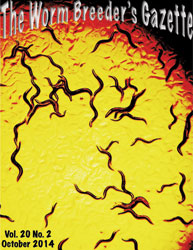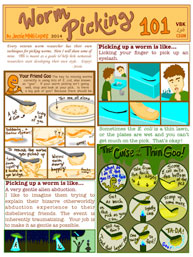The nomenclature of genes in Caenorhabditis elegans is based on long-standing, successful guidelines established in the late 1970s (Horvitz et al., 1979). Over time these guidelines have matured into a comprehensive, systematic nomenclature that is easy to apply, descriptive and therefore highly informative.
Recently, a flood of parasitic nematodes genome data has become available, including Brugia (Ghedin et al., 2007) and Megliodogyne (Opperman et al., 2008). Annotation of these genomes is largely based on blast search similarity with C. elegans as the closest and most thoroughly characterized nematode. Several different nomenclature systems have developed, as seemed appropriate to those involved in each genome project. A strong case can be made for the general adoption of the C. elegansnomenclature guidelines across the nematodes (Beech et al., 2010; Bird and Riddle, 1994), although until recently this has not been widely used.
A two, and later, three letter species code allowed the C. elegans nomenclature to be extended to four additional Caenorhabditis species C. japonicum (Cja), C. ramanii (Cra), C. brigssae (Cbr) and C. brenneri (Cbe). Applying the guidelines to a wide range of nematode species will require further modification. Using a four letter species code could identify 1364 of the 1537 nematode species listed with NCBI, without modification, rather than 976. C. elegans genes with several paralogs in a related species can be identified with a period and number after the gene name. For example, four copies of unc-29 in the trichostrongylid parasites are unc-29.1, unc-29.2, unc-29.3 and unc-29.4 (Neveu et al., 2010). With no defined wildtype for parasitic species, a standard for designating polymorphism needs to be developed. Finally, among the 50-60% of genes in distantly related nematodes that have no clearly identifiable C. elegans homolog, are likely to be those that are most interesting for organism biology. Naming of these species-specific genes requires coordination with the C. elegans nomenclature to avoid conflicts. For a nomenclature to be accepted and generally applied, a wide consensus among those who use the guidelines is required. A workshop will be held at the ICOPA XII conference in Melbourne, August 2010, to make recommendations for new guidelines.
References
Beech RN, Wolstenholme AJ, Neveu C, Dent JA. (2010). Nematode parasite genes, what's in a name? Trends Parasitol. [Epub ahead of print] 
Bird DM, Riddle DL. (1994). A genetic nomenclature for parasitic nematodes. J. Nematol. 26, 138-143. 
Ghedin E, Wang S, Spiro D, Caler E, Zhao Q, Crabtree J, Allen JE, Delcher AL, Guiliano DB, Miranda-Saavedra D, et al. (2007). Draft genome of the filarial nematode parasite Brugia malayi. Science 317, 1756-1760. 
Horvitz HR, Brenner S, Hodgkin J, Herman RK. (1979). A uniform genetic nomenclature for the nematode Caenorhabditis elegans. Mol. Gen. Genet. 175, 129-133. 
Neveu C, Charvet C, Fauvin A, Cortet J, Beech R, Cabaret, J. (2010). Genetic diversity of levamisole receptor subunits in parasitic nematodes and abbreviated transcripts associated with resistance. Pharmacogenetics and Genomics In Press.
Opperman CH, Bird DM, Williamson VM, Rokhsar DS, Burke M, Cohn J, Cromer J, Diener S, Gajan J, Graham S, et al. (2008). Sequence and genetic map of Meloidogyne hapla: A compact nematode genome for plant parasitism. Proc. Natl. Acad. Sci. USA 105, 14802-14807. 




